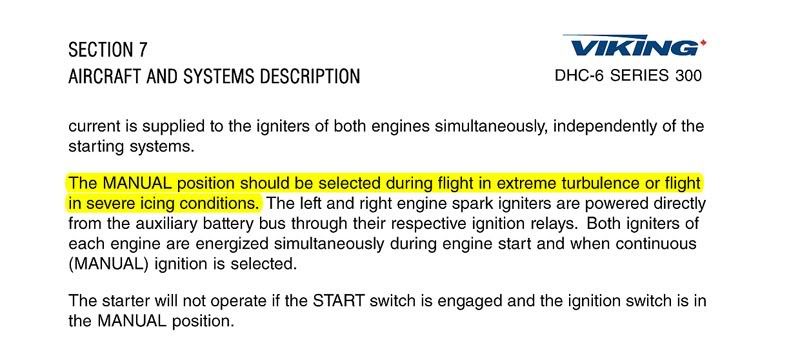I think that the only possible correct answer to this question is "Do what the AFM says you should do."
The aircraft manufacturer is responsible for integrating all of the different components (engines, avionics, fuel system parts, brake system parts, light bulbs, engine nacelles, etc.) into a finished and complete aircraft. The aircraft manufacturer is also responsible for testing the finished product (the whole aircraft, as opposed to the individual components) and making sure that it operates safely and satisfactorily during all phases of the approved regime of flight.
So, when it comes to ignitors, different aircraft manufacturers may publish different instructions for ignitor operation. The procedures, limitations, and requirements for ignitor operation on a Twin Otter or a PC-6 (both of which are very slow moving, low altitude utility aircraft) may well be very different than the procedures, limitations, and requirements for ignitor operation on a King Air, PC-12, or Piaggio Avanti, aircraft that operate in a totally different environment.
The question is philosophically similar to asking "what kind of fuel can I burn in my aircraft?" If you look only at the engine manufacturer's specifications, you will find that as far as they are concerned, you can burn just about anything you want to, including AVGAS, automotive diesel, etc. But, if you look at the individual aircraft manufacturer's limitations and requirements for fuel, these will almost always be much more restrictive than what the engine manufacturer provides. This is because the aircraft manufacturer must ensure that the permitted fuel is compatible with all the fuel tank components, the filters, the fuel pumps, the allowable range of temperatures and atmospheric pressures, etc.
So, in short:
Do what the AFM tells you to do, and appreciate that the instructions may be different from one aircraft to another.
FYI, below is an image of the instructions published in the AFM (Revision 53) for the Series 300 Twin Otter.
Michael
